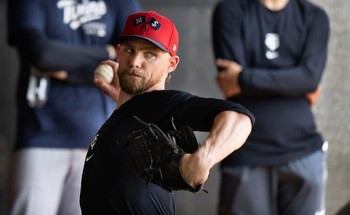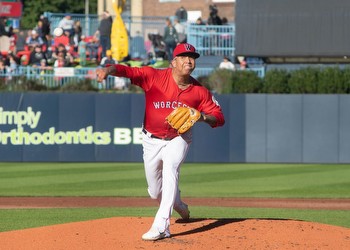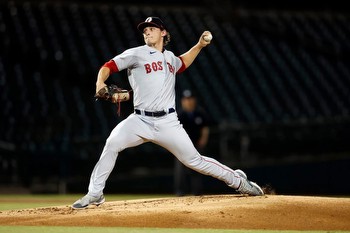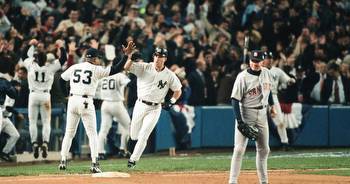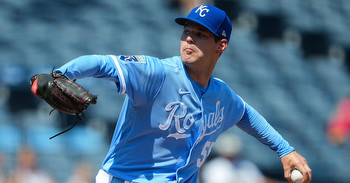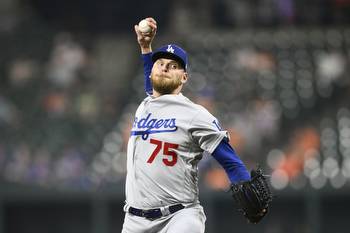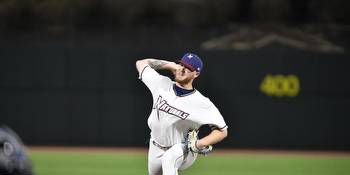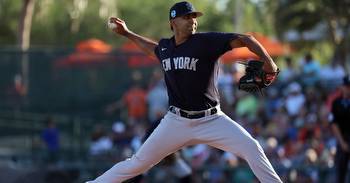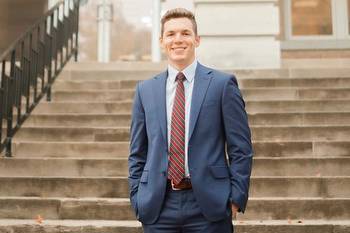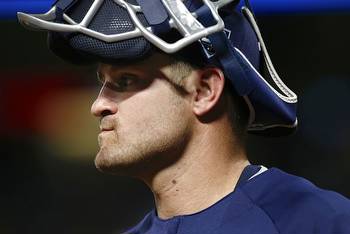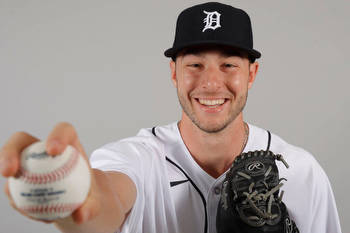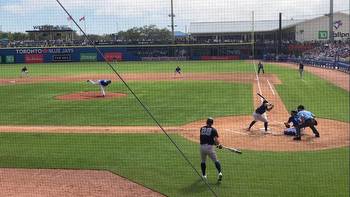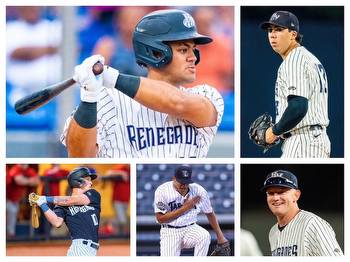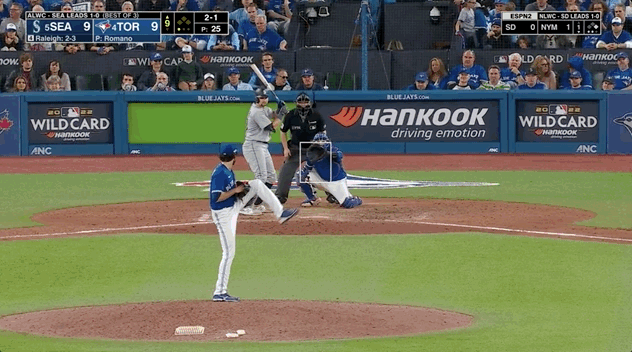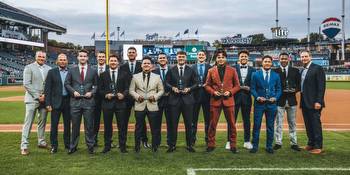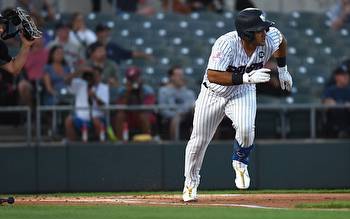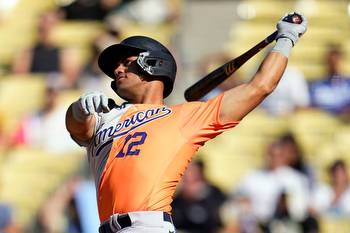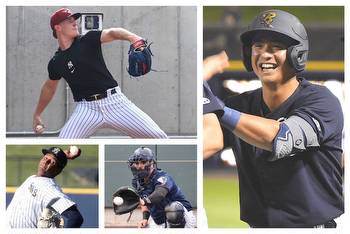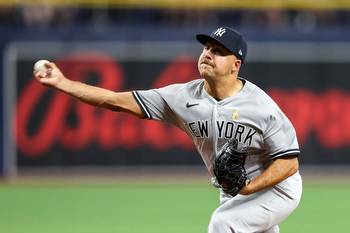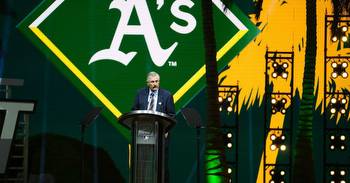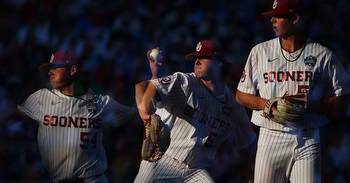Yankees prospect Carson Coleman is a humanitarian on the road to bigs with his ‘run-rise fastball’
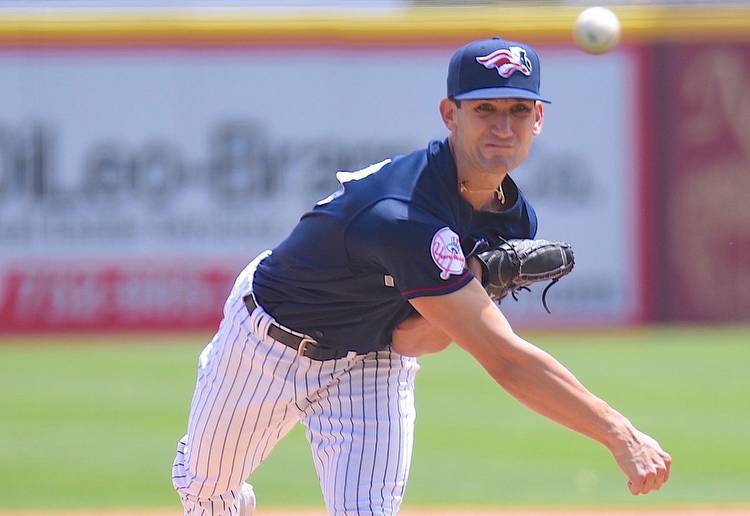
If Carson Coleman becomes a big part of the Yankees bullpen someday, and the 6-foot-2, 190-pound right-hander appears on his way after having a breakout 2022 season closing in High-A and Double-A, a lot more people will know about his impressive off-the-field passions.
Look at his social media and you’ll see that Coleman has been very involved in raising awareness for two deadly diseases that have no cure, ALS and Alzheimer’s.
“That’s very special to me, something that’s gone on in my family for generations,” Coleman said. “My grandfather on my mom’s side died of ALS and my mom’s side has a big history with Alzheimer’s.”
Dig deeper and you’ll see Coleman has participated in a bunch of charity programs: March to End Alzheimer’s, ALZ/4MOM Foundation, Miracle League and Shriner’s Hospitals for Children, among others. The three-time SEC honor roll achiever takes part in elementary school reading programs near his home in Lexington, Kent., too.
BUY YANKEES TICKETS: STUBHUB, VIVID SEATS, TICKETSMARTER, TICKETMASTER
Coleman, 24, also is a strong Christian who shares his favorite Bible verse on his Instagram profile: Philippians 4:13 (I can do all things through Christ who strengthens me).
“That’s something that’s been big for me, grow my faith and have some gratitude and gratefulness for the platform and the opportunity that I get with professional baseball,” Coleman said. “That’s been a big growth for me as a human. Obviously I hope I get to play in the big leagues in the Bronx with the New York Yankees, but I want to be remembered for the person I am alongside what player I was, too. It’s a big deal to me.”
His pitching was a big deal last season, as the 2020 undrafted free agent signee out of the University of Kentucky followed a lackluster first pro season by winning Eastern League Reliever of the Year honors. He began the season working 18 consecutive shutout innings for the Low-A Hudson Valley Renegades, then had a lot more success following his mid-May promotion to the Double-A Somerset Patriots.
Coleman finished last season with a 2.13 ERA in 44 appearances with 19 saves in 21 attempts. After experiencing a lot of control problems in college and as a first-year pro, he greatly improved his control last year. In 63 1/3 innings, he struck out 95 and walked 19.
Impressively, Coleman pulled this off throwing mostly fastballs. His heater, which sits 94-to-95 mph and touches 98, is special because it has a lot of movement. He calls it a “run-rise fastball.”
People are noticing. Coleman finished the season ranked by MLB Pipeline as the Yankees’ 30th-best prospect. If he continues to progress this year, he could pitch his way to the big leagues.
Coleman shared his backstory with the NJ Advance Media in a Zoom call this week:
How is your offseason going? Are you back home in Kentucky getting ready for spring training?
“I’ve been in and out of Kentucky. I’m in Indiana right now. My girlfriend cheers for the Colts, so I do both spots. I’ll be heading down to Tampa soon, and that’ll give me two months to hopefully develop some more, get better and then when the season rolls around in April, get it going.”
You went to high school at Lexington Catholic, Brian Cashman’s alma mater. Before his long run as Yankees GM, he was a prep basketball player who wished he was good enough to play at Kentucky. Is Cashman’s old hoops jersey in a school display case that you used to walk past?
“I think there is something in the athletic hallway. It might be a Yankees jersey.”
Walker Buehler also is from Lexington. He’s obviously been an ace with the Dodgers. He’s about four years older than you. Have you had a chance to meet Walker and talk pitching?
“I threw with Walker the last two years. This year, because of his Tommy John surgery, I haven’t been able to do that, but the last couple of years we were throwing together at Pitching Performance Lab in Lexington. Walker is a heck of a personality, a fun guy to be around. I definitely learned a lot from him. I’d like to say there are certain parts of my mechanics that I take from Walker.”
I’m guessing you grew up a big Kentucky Wildcats hoops fan. They’ve been a national power for many decades.
“It was huge deal for me when they won their last championship back in 2012. I would have been graduating eighth grade at that point. I’ve been to a decent amount of games at Rupp Arena, a game or two every year.”
Your neck of the woods also is known as the horse capital of the world. I read that there’s one horse for every 12 people in Lexington, which has about 450 horse farms. A lot of Triple Crown thoroughbreds are bred there. Are you a big horse racing fan?
“I love the horse racing. I went Churchill Downs in Louisville for the Kentucky Derby one time when I was very young. There’s a horse track called Keeneland in Lexington that has a fall season through October. I go most years. It’s a blast. Beautiful area. Beautiful white-picket fences. Beautiful horses. Fall in Kentucky is really beautiful.”
Your career really took off last year. You had control problems in college that carried over into your first pro season, but you always had that rising and running fastball that scouts rave about. What changed last year? Was it as simple as throwing more strikes?
“My first year at Tampa was not the best and I know I had a ton of walks. Obviously throwing more strikes was a big thing. I think one big mental adjustment I made was taking my chances with the hitter. If I was going to get beat, I was going to get beat. Just by being in the zone more, the walks went down and strikeouts went up.”
Was there a spring training dual with Jasson Dominguez, Anthony Volpe or another top prospect that you won that gave you confidence heading into the season?
“Spring training went really well for me. I was punching out a lot of guys. My last outing before leaving for Hudson Valley, I threw two innings, faced six hitters and I struck out all six. That included guys like Jasson Dominguez, and Trey Sweeney. The next day, I went to Hudson Valley. That was definitely a big confidence boost where you’re like, ‘Hey, I just kicked some ass right there, why should it be any different when it comes to Hudson Valley?’ So that just kind of carried on.”
You like throwing fastballs up in the zone and they have a lot of movement. Tough pitch to hit. Is that something that came natural to you?
“Teammates always ask me, ‘What the heck’s up with your fastball?’ They’re trying to figure it out, too. I think a lot of it is natural. I guess you could say I have all the little things that go into what makes a fastball good. A lot of it is my lower arm slot. That’s what makes the appearance of the rise. And then me throwing three-quarters is what gets some of the run. That’s why it’s a rise-run fastball. And then along with the velocity, movement and spin on the ball … I spin it really well. I’m deceptive, too. I throw across the body a little bit. I think all those things make it an elite fastball.”
What percentage of fastballs do you typically throw?
“I probably throw no less than 80% fastballs, maybe even 90%. It really doesn’t matter if I’ve thrown three in a row or if the count is 0-2 or 1-2. Some guys are like, ‘You’ve got to throw the slider when it’s 1-2 or 0-2 to get ‘em out,’ but I always think if a throw one more fastball, the guy is going to swing and miss. So I rolled with that a lot.”
Your slider got better last year, too, right? Having a quality second pitch probably made your fastball play up even more.
“Definitely. Obviously the fastball is my bread and butter, but the slider has gotten a lot better. I even threw some changeups towards the end of the year and was getting good results. I’m excited about both pitches, but if I’m able to get a slider in there for a strike, you can get hitters off the fastball. That was definitely the difference between pitching in Tampa in 2021 and last year. In Tampa, I knew I was going to have develop those pitches to move on in pro ball or become a big leaguer, which is the goal. In Tampa, I was in games trying to throw sliders and changeups, and truthfully I threw them terrible. When you’re in a game working on your slider and you throw it back-to-back out of the zone, you’re immediately going 2-0 in the count. Then you’re probably going to get hit or walk the guy. So that was the frustration in 2021. A big difference last year was being able to throw some sliders for strikes, mix it up a little bit.”
Most young pitchers coming through the minors start out as a starting pitcher. Not you. You were strictly a reliever in college and you’ve only pitched out of the bullpen as a pro. Were you always a reliever because you basically had been a one-pitch pitcher?
“I picked up pitching very late into my senior year of high school. I was throwing really hard. I don’t know if it was just one random outing, but all of a sudden I got attention from the big colleges. Very quickly I learned that pitching was going to be my best shot for a career in baseball. I was actually going to play middle infield at Cincinnati as a walk-on. Ten days before school started, coaching situations changed and I switched to Kentucky. But I’ve always been a reliever. I like closing. I like being in the moments where the shit hits the fan. I do well under pressure. I picture myself staying in that role for the rest of my career.”
The Rays drafted you in the 33rd round in 2019, your redshirt sophomore season at Kentucky. Was it an easy decision not signing because you were picked so late and the signing bonus wouldn’t have been substantial?
“It would have been tempting to sign if I went around round 15. Since it was just my second full year pitching, I was going to be patient. It got to a point to where I was committed to going back to school. That’s what I shared to teams when they called after the 15th round. It’s wild saying that when someone calls and says, ‘We’d like to take you here.’ The Rays still decided to draft me late in that draft and it was tempting to sign. It’s your dream to get into pro ball, but I trusted my family and my agent’s judgment. Going back to school was probably the better thing. Obviously you never plan on a pandemic happening the next year.”
COVID screwed things up for a lot of people. You had a good start to your 2020 season. Your walks were way down. Then the season was over in March. Then the 2020 MLB draft gets cut from 40 rounds to five, and everyone else is a free agent with a $20,000 signing bonus cap. You don’t get drafted, then pick the Yankees. What was that process like? Why the Yankees?
“I talked to at least half the teams, maybe closer to 20. I chose the Yankees because they’re great with the pitching development side. Me being a guy who technically had two full seasons under his belt when it came to pitching, I felt like career wise that was the easy choice.”
Last season had to be a big confident boost. You had a lot of success at two levels.
“When I came into the spring, I didn’t dwell on the past. I didn’t put any pressure on myself. After the first year in pro ball that I had, I almost had a careless attitude. Obviously I cared, but no matter what happened, I’m competing and doing my best. I came into the spring very calm and collected, then I threw really well throughout spring training. I got a big confidence boost from that, especially after going over to the big-league camp and pitching in a game, even though it was one hitter (and striking out Phillies outfielder Nick Maton). Whenever I went to Hudson Valley, I carried that confidence with me and it was 19 innings until I gave up a run up there. And once I got up to Somerset, that’s a big jump. That’s where it gets real. Spencer Medick, the pitching coach up in Hudson Valley, told me before I went to Double-A, ‘Dude, I promise you it’s not going to be any different for you. Trust the fastball. Don’t change anything.’ Truthfully, I held on to that because that’s who I am. Obviously the hitters are so much better in Somerset, but I stuck to my same gameplan and things worked out really well there, too.”
Want to bet on MLB?
You had a great ending to your season. Tell me about that the Eastern League championship game clincher. Somerset is winning 15-0, Randy Vazquez pitches eight no-hit innings and you come in to work the ninth. You hit the leadoff batter, then set down three in a row, ending the game on a strikeout. What was your mindset going into that outing?
“It wasn’t any different because of the no hitter. I was going to be the same me. Obviously, I didn’t want to give up a hit, but I was going to trust myself. We were 15-0 when I came in. When a game is like that, the score is your best friend as a pitcher. I was pumped that we were able to finish it off. That was a pretty cool moment, especially when you end it on a strikeout. I remember me and (catcher) Austin Wells embracing. That’ll be a good memory for a long time.”
This will be another big year for your career. You might start out in Triple-A. You may get to make your Major League debut. Ron Marinaccio had a really good rookie year as a Yankees reliever last season after pitching in Somerset the previous season. Maybe that could be you this year.
“I look up to Ron a lot because he had the one big year, and the next thing you know he’s in the big leagues. Ron’s a stud. That guy deserves to be up there. I want to be the next Ron. But whether I start the season in Somerset or Scranton, I hope to do the same thing as last year: Keep performing. I hope to prove myself and pave the way.”

